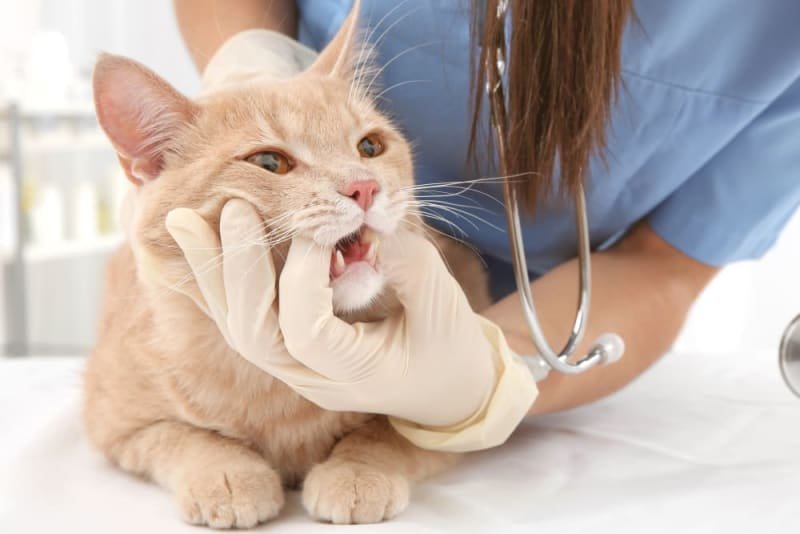When it comes to caring for our cats, we’re usually quick to think about food, toys, grooming, and vet checkups. But there’s one crucial part of feline health that often gets overlooked: dental care.
Just like humans, cats need regular attention to their teeth and gums to stay healthy and pain-free. The problem? Most cat parents don’t realize how important it is until there’s already a problem—bad breath, tooth loss, or worse, systemic infections that affect the heart, liver, or kidneys.
The good news is that keeping your cat’s mouth healthy doesn’t have to be complicated. With a few easy steps and a little consistency, you can ensure your feline friend has a clean, pain-free smile for years to come.
Why Dental Health Matters in Cats

Dental disease, or periodontal disease, is one of the most common health issues in adult cats. According to veterinarians, over 70% of cats show signs of dental disease by age three.
Left untreated, dental issues can lead to:
- Tooth decay and loss
- Pain and difficulty eating
- Gum infections
- Systemic infections spreading through the bloodstream
- Organ damage over time
And here’s the tricky part: cats are experts at hiding discomfort. Your cat might continue eating and behaving normally even with serious dental problems, so prevention is key.
Spot the Signs: Is Your Cat Having Dental Trouble?
You might not be checking your cat’s mouth every day, but keep an eye out for these subtle warning signs:
- Bad breath (halitosis)
- Red, swollen, or bleeding gums
- Yellow or brown tartar on teeth
- Drooling
- Pawing at the mouth or face
- Reduced appetite or favoring soft food
- Weight loss
If your cat shows any of these symptoms, it’s time for a vet visit. Dental disease can progress quickly, and early treatment can save your cat a lot of pain—not to mention the cost of extractions or surgeries later.
Step-by-Step: How to Care for Your Cat’s Teeth at Home
The idea of brushing a cat’s teeth might sound impossible, but with patience and the right approach, it’s doable—and incredibly beneficial.
1. Start Slow and Build Trust
Don’t jump straight to brushing. Begin by gently handling your cat’s mouth for a few seconds at a time. Touch their lips and lift them slightly to expose the teeth, rewarding your cat with a treat or praise afterward.
Do this daily for a week or two, until your cat is comfortable with the idea.
2. Use the Right Tools
Never use human toothpaste—it contains ingredients that are toxic to cats. Instead, get:
- Pet-safe toothpaste (available in cat-friendly flavors like poultry or seafood)
- A small, soft-bristled toothbrush, finger brush, or even a piece of gauze wrapped around your finger
These tools are designed to be gentle on your cat’s gums and effective at removing plaque.
3. Brush Gently, Focus on the Gumline
When your cat is ready, apply a small amount of toothpaste and brush in small circular motions, especially near the gumline where plaque builds up. Focus on the outer surfaces of the teeth—most cats won’t let you get to the inside, and that’s okay.
Aim for brushing 2–3 times per week, but even once a week is better than nothing.
Bonus Tips: Dental Health Without Brushing
If brushing is truly out of the question (some cats simply won’t tolerate it), there are still ways to support oral health:
1. Dental Treats and Chews
Look for treats approved by the Veterinary Oral Health Council (VOHC). These are designed to reduce plaque and tartar as your cat chews.
2. Dental Diets
Some prescription cat foods are formulated specifically for dental health. Their texture helps clean the teeth as your cat crunches.
3. Water Additives and Gels
There are odorless, tasteless additives you can mix into your cat’s water to reduce bacteria and freshen breath. These won’t replace brushing but can be a helpful addition to your routine.
Regular Vet Dental Exams: Non-Negotiable
Even with the best at-home care, your cat should still have regular dental exams with the vet. Your vet can:
- Check for early signs of periodontal disease
- Perform professional cleanings under anesthesia when needed
- Recommend extractions or treatments if necessary
Depending on your cat’s age and oral health, your vet might recommend annual or semi-annual cleanings.
Yes, dental cleanings require anesthesia—but they are safe when performed by professionals, and the benefits far outweigh the risks in most cases.
Cat Dental Myths (and Truths!)
Let’s clear up a few common misconceptions:
Myth: “Dry food keeps my cat’s teeth clean.”
Truth: Most regular kibble doesn’t do much to remove plaque. In fact, some cats gulp it down whole.
Myth: “My cat is still eating, so their teeth must be fine.”
Truth: Cats will often eat through pain. Never assume they’re okay just because they’re eating.
Myth: “Older cats can’t be helped—it’s too late.”
Truth: It’s never too late to improve your cat’s oral health. Even senior cats benefit from gentle care and vet checkups.
A Little Care Goes a Long Way
Taking care of your cat’s teeth might not be the most glamorous part of pet parenting, but it’s one of the most important. With a bit of patience and some simple tools, you can help prevent painful issues, save on vet bills, and give your cat a healthier, happier life.
So next time your kitty flashes you a yawn, take a peek at those teeth—and make sure that adorable smile stays healthy for years to come.

